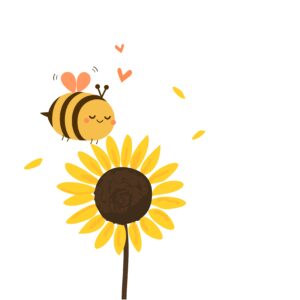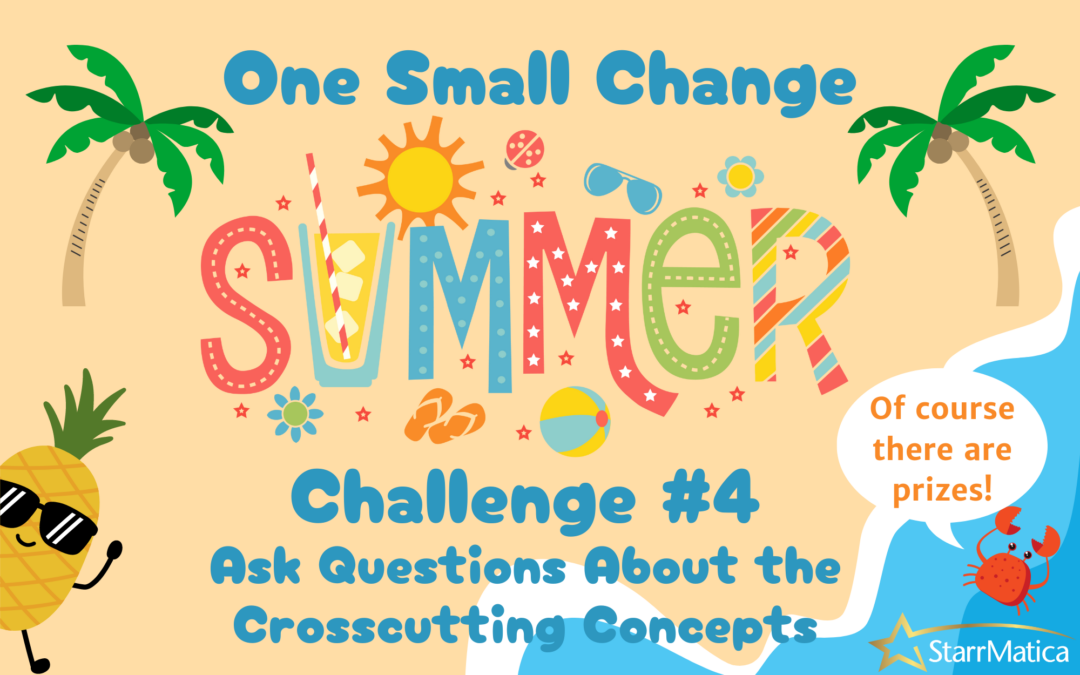New to the “One Small Change Summer Challenge?” Please read this blog post first!
You can find Challenge #1 here.
You can find Challenge #2 here.
You can find Challenge #3 here.
(Reminder: You must complete all 7 challenges to be eligible for prizes on September 2nd!)
Similar to highlighting the science and engineering practices as described in Challenge #3, asking questions about the crosscutting concepts is an easy way to get your students to think scientifically during read alouds.
Part One:
Watch this short video excerpt from a longer class I offer about integrating scientific thinking and an engineering mindset into your daily classroom routine. In this video, you’ll discover how to emphasize the crosscutting concepts with nonfiction picture books.
Note: This video was removed on September 2nd at the end of the challenge.
Part Two:
- Find a nonfiction STEM-themed picture book published in the last five years that aligns with a topic in your curriculum. In addition to the texts I shared in the video, below are a few off my current favorites. And you can find even more suggestions by scrolling through StarrMatica’s Facebook feed.
The Great Lakes: Our Freshwater Treasure by Barb Rosenstock – Readers are introduced to the world of paleontology by a scientist who studies coprolites – fossilied dinosaur poop!
- NGSS Curriculum Connection:
- 2-ESS2-3 – Obtain information to identify where water is found on Earth and that it can be solid or liquid.
- 5-ESS2-2 – Describe and graph the amounts and percentages of water and fresh water in various reservoirs to provide evidence about the distribution of water on Earth.
- Science Question:
- Why is quantity an important measurement to consider when talking about The Great Lakes?
Flower Talk by Sara Levine – Learn how different plants use color to “speak” to different pollinators in this engaging text narrated by a cactus.
- NGSS Curriculum Connections:
- 2-LS2-2 – Develop a simple model that mimics the function of an animal in dispersing seeds or pollinating plants.
- Science Question:
- Look at the illustrations in the text. What patterns do you notice that identify a flower as a flower.?
I’m Trying to Love Spiders by Bethany Barton – With humorous illustrations, the author uses facts about spiders to try and convince readers-and herself!-that spiders should be loved rather than feared.
- NGSS Curriculum Connection:
- 4-LS1-1 – Construct an argument that plants and animals have internal and external structures that function to support survival, growth, behavior, and reproduction.
- Science Question:
- What structures does this organism use to meet its basic needs for survival?
2. To qualify for the prizes on September 2nd, please visit this Facebook Post and share in the comments:
-
- What book did you choose, and how does it fit in your curriculum?
- Why are you excited to share this book? What about it speaks to you?
- Which crosscutting concept could you focus on with this text? Why?
 This week’s challenge comes with two gifts!
This week’s challenge comes with two gifts!
Here is a one page printable that shares the meaning of each crosscutting concept for your reference. These descriptions come straight from the NSTA and more detailed information can be downloaded here.
Here are printable crosscutting concepts question cards to save you time as you think about questions to ask. (Tip: Many teachers print these on cardstock, cut them apart, laminate, hold punch, and put on a ring to keep handy at the front of the classroom.)
Want extra credit?
Watch this video overview that explains the basics of the crosscutting concepts:
This video is part of StarrMatica’s Virtual Science Coach “bite-sized” professional development. The library of self-paced videos, activities, podcasts, and texts includes a separate video for each practice. You can learn more about it here: https://starrmatica.com/virtualsciencecoach/
Explore mentor texts in a blog post for each crosscutting concept:
- PATTERNS
- CAUSE AND EFFECT
- SCALE, PROPORTION, AND QUANTITY
- SYSTEMS AND SYSTEM MODELS
- ENERGY AND MATTER
- STRUCTURE AND FUNCTION
- STABILITY AND CHANGE
See you next Monday!


